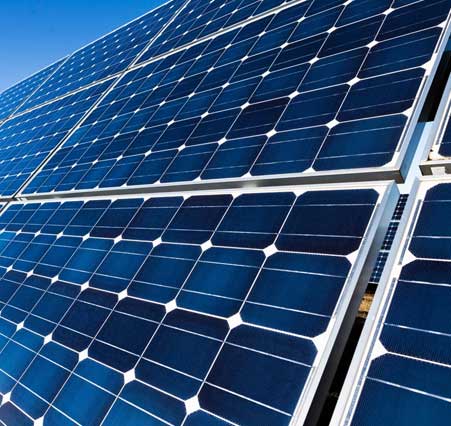Customer base
Solar cell related products and related supporting manufacturers, PVD coating processing enterprises



Solution

Solar cell related products and related supporting manufacturers, PVD coating processing enterprises
Provide PVD coating equipment and technology for enterprises
According to the characteristics of solar cell related products and the growing customer demand, we have developed a variety of equipment technology and coating technology

The energy generated by solar power generation is the main pillar of sustainable energy supply. Intelligent energy conversion for renewable energy brings opportunities and challenges to the power generation industry. High efficiency photovoltaic cells emerge as the times require. Modern storage and battery technology will greatly promote the use of environmental protection energy.
With the progress of technology, the development of thin film solar cells will change with each passing day, and the market share of photovoltaic market will be gradually increased in the future. As the best performance thin film solar cell, CIGS thin film solar cell will also usher in a period of rapid development.
Copper gujia selenium (CIGS) thin film solar cells have layered structure, and the absorbing materials belong to I-III-VI group compounds. The substrate is usually glass or flexible film substrate. In general, multilayer films are deposited by vacuum sputtering, evaporation or other non vacuum methods to form p-n structure to form photoelectric converter. Starting from the light incident layer, the layers are: metal grid electrode, antireflection film, window layer (Zn0), transition layer (CDS), optical absorption layer (CIGS), metal back electrode (MO) and glass substrate.
As the bottom electrode of the battery, Mo requires good crystallinity and low surface resistance. The adhesion between layers should be considered in the preparation process. Generally, Mo layer should have fish scale structure to increase the contact area between the upper and lower layers. Cis / CIGS layer is the most important part of the battery, and the semiconductor film required to be prepared is p As a buffer layer, CDS can not only reduce the gap discontinuity between i-zn0 and p-cis, but also solve the lattice mismatch between CIS and Zn0; N-zn0 (azo) as the top electrode of the battery requires low surface resistance, good visible light transmittance and ohmic contact with Al electrode; the antireflection layer mgfz can reduce the reflection of light on the receiving surface and improve the efficiency of the battery. The i-zn0 and CDs layers are the n-type layers of the battery and form p-n junction with p-type CIGS semiconductor films. CIGS is the core material of thin film battery, which belongs to orthorhombic chalcopyrite.
The bottom electrode Mo and the upper electrode n-zn0 of CIGS thin film solar cells are usually made by magnetron sputtering. The CIGS magnetron sputtering coating production line has been developed. The process is mature. The metal alloy layer is sputtered on large area glass, and the composition can be controlled accurately.
